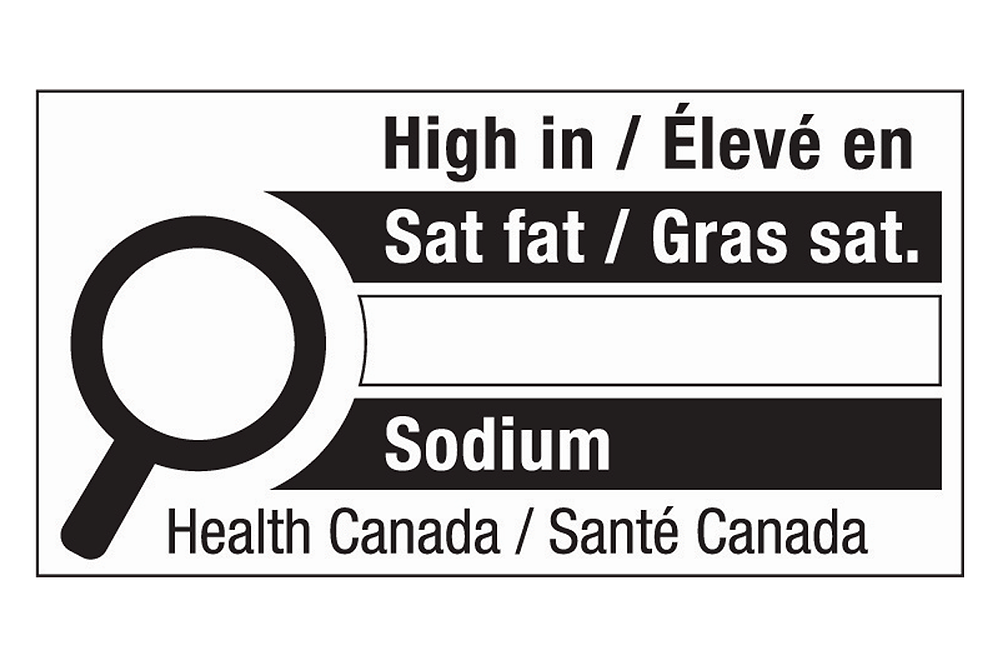OTTAWA – Foods high in saturated fat, sugars and/or sodium will be required to carry a front-of-package label, according to Health Canada. The label will include the symbol of a magnifying glass, intended to capture people’s attention, and act as a quick visual cue to identify foods high in the nutrients.
The regulations will go into effect on July 20, but food companies will have until Jan. 1, 2026, to comply.
"The new front-of-package labeling regulations will allow consumers to make informed decisions about their food,” said Marie-Claude Bibeau, Canada’s minister of agriculture and agri-food. “It also recognizes the nutritional value of certain foods that are either unprocessed or barely processed, such as calcium in dairy products. Processors who wish to do so have a few years to review their processes and, in some cases, improve their recipes."
Foods that will require the front-of-package nutrition symbol include packaged foods that meet or exceed 15% of the daily value of saturated fat, sugars or sodium. Foods in this category include deli meats, soups, frozen desserts and puddings.
Prepackaged foods with a small reference amount (less than or equal to 30 grams or 30 milliliters) that meet or exceed 10% of the daily value of one of the three nutrients also will be required to carry the front-of-package label. Foods in this category are pickles, salad dressing, cookies or breakfast cereals. Health Canada noted that because these foods are consumed in smaller amounts and contain concentrated sources of the nutrients, they have a lower threshold.
Frozen lasagna, meat pie or pizza products, referred to as prepackaged main dishes with a reference amount of greater than or equal to 200 grams and meet or exceed 30% of the daily value of one of the nutrients, also will be required to carry the new label. These products have a higher threshold because they are consumed as a main dish and may be expected to make up more of a consumer’s daily nutrients, according to Health Canada.
Foods exempted from the new regulation are recognized as having a health protection benefit for the whole population or vulnerable sub-populations. Some products in the exempt category include whole or cut vegetables and fruits that are fresh, frozen, canned or dried; 2% and whole milk; eggs; foods with a healthy fat profile like vegetable oils, nuts and fatty fish; and any combination of these foods.
Plain yogurt and cheese also are exempted because they are considered important sources of calcium. Raw, single-ingredient ground meat and poultry received an exemption to avoid giving the impression they are nutritionally inferior to whole cuts that also will not be required to carry the nutrition symbol.
Health Canada added that foods will lose their exemption if they are formulated with an ingredient that contains saturated fat, sugars and/or sodium.




